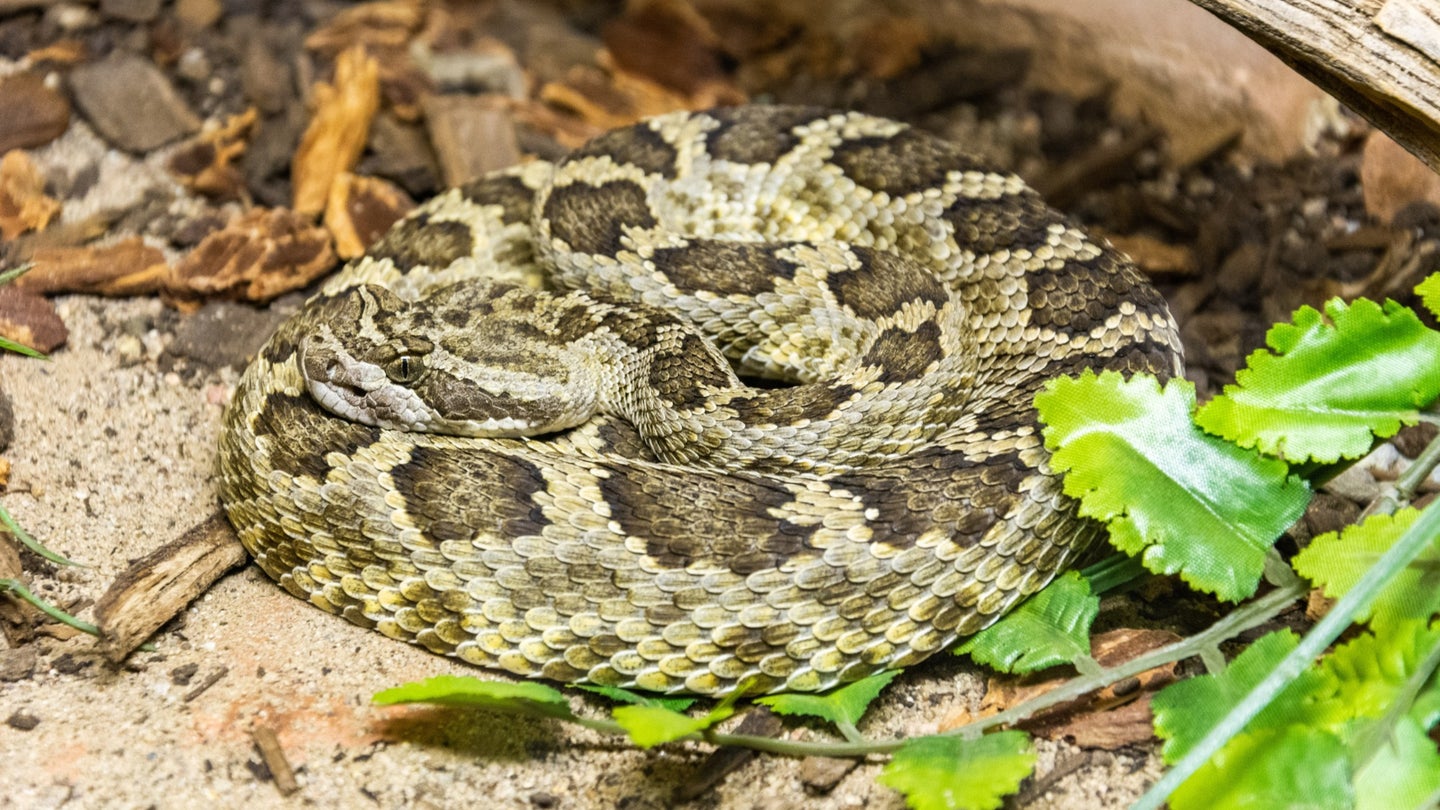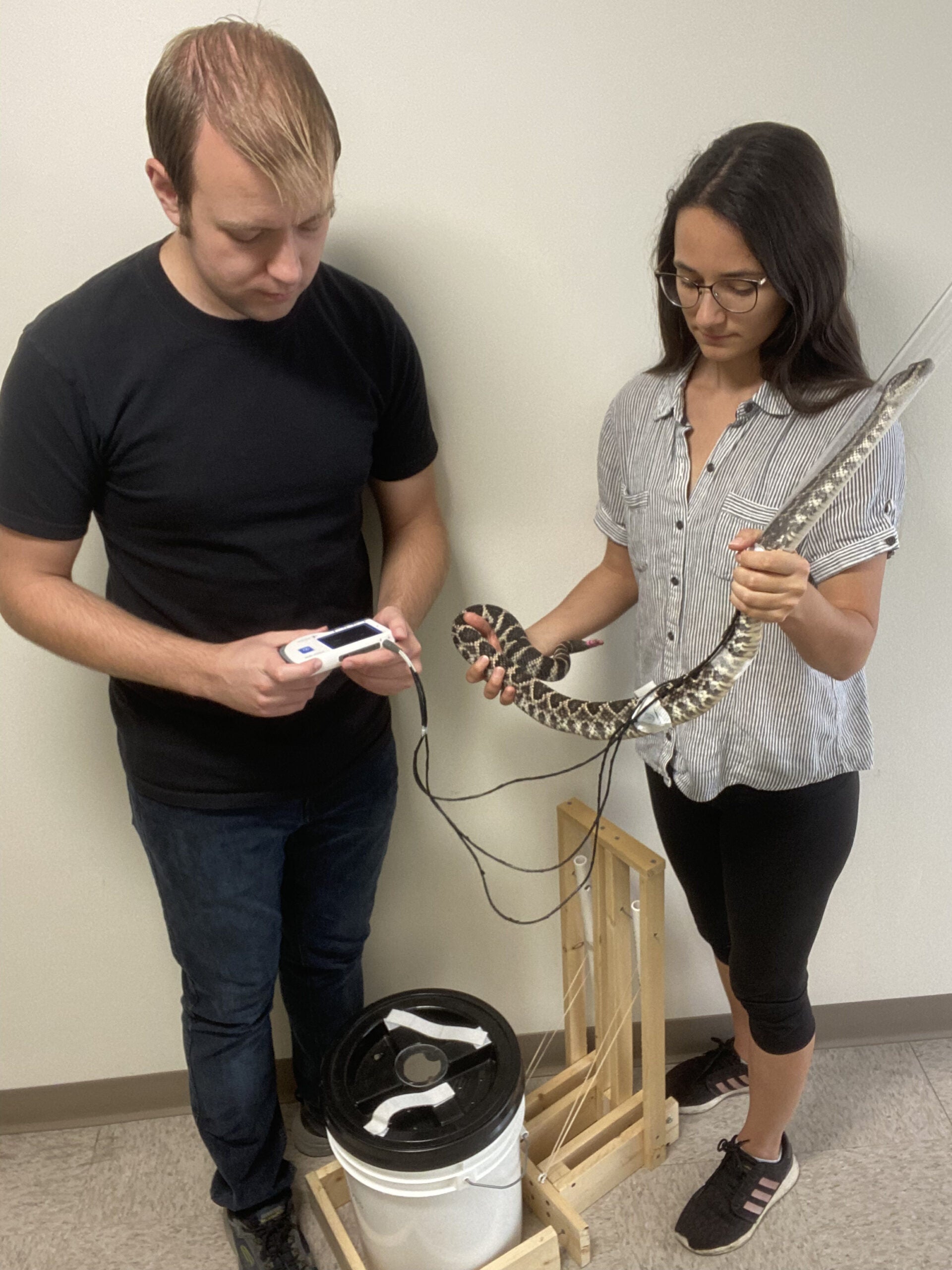
As The Beatles reminded us in their widely covered 1967 tune, we can all get by with a little help from our friends. The same may go for stressed-out snakes. A study published July 6 in the journal Frontiers in Ethology finds that rattlesnakes can use a process called social buffering to respond to stressful situations.
[Related: Rattlesnake venom is lethal, but understanding it could save lives.]
When animals like snakes face acute or chronic stress, their bodies produce more hormones. These extra hormones cause shifts in their behavior, immune response, and nervous systems, but some animals can modulate their response to buffer this stress if they are in the presence of an animal of the same species. This method of using an animal of the same species to calm down is called social buffering.
Social buffering in reptiles hasn’t been extensively studied, but snakes may be more behaviorally complex than scientists once believed. To take a closer look at the social lives of our scaly pals, the team looked at rattlesnakes in Southern California to study their use of social buffering.
“We showed that when two snakes were together and experienced a stressful situation, they could buffer each other’s stress response, much like what happens to humans when they endure a stressful event together,” co-author and Loma Linda University PhD student Chelsea Martin said in a statement. “This dampening of the stress response has not been reported previously in any reptile species.”
For the study, the team assessed social buffering in 25 wild-caught southern Pacific rattlesnakes across three situations—when snakes were alone, when they were in the presence of a rope, and while they were close to a companion of the same sex.
The team then outfitted the snakes with electrodes near their hearts and attached those sensors to a heart rate monitor, since measuring their heart rates is typically a reliable indicator of their acute stress levels and social buffering.

The snakes were then placed in a dark and enclosed bucket as a testing environment. After adjusting to the new surroundings for 20 minutes, the snakes were disturbed and the team measured their heart rate increase from their baseline, or the time it took for their heart rate to return to normal. They also noted the time they spent rattling with their signature tails.
The team found that when the rattlesnakes were exposed to stress, the presence of a snake companion significantly changed the heartbeat of both snakes. They team worked with wild-caught rattlesnakes, which demonstrated that social buffering likely exists in nature and can likely persist in snakes in captivity.
[Related: Emotional support animals really do emotionally support us.]
Rattlesnakes living in mountains are known to hibernate communally, which may have been an indication of a stronger social network. Lowland snakes, however, likely have different bonds, as they typically spend the winter alone. Additionally, female rattlesnakes are known to aggregate during pregnancy and remain with their newborn offspring. Using these variables helped the team in this study establish that the tendency to buffer was equally pronounced in both populations and in both sexes.
According to the team, some of the limitations of this study include keeping the snake pairs in very confined spaces and not examining whether a stress buffering response occurs when the animals are close, but not in physical contact with each other. They also hope to test another if familiarity between two snakes impacts this social buffering response.
The study still could be a step in rehabilitating the fearful public image of snakes. A YouGov.com poll from June 2022 found that three in 10 Americans fear snakes, and a significant number of those who said they fear the slithery animals “a great deal.”
“Our results provide insights into social behavior patterns of snakes,” said Martin. “But it might also improve rattlesnakes’ image. In the public eye they are often maligned. Our findings could help to change that.”
The post Stressed rattlesnakes just need a little help from their friends appeared first on Popular Science.
Articles may contain affiliate links which enable us to share in the revenue of any purchases made.
from | Popular Science https://ift.tt/wgK4oYy



0 Comments